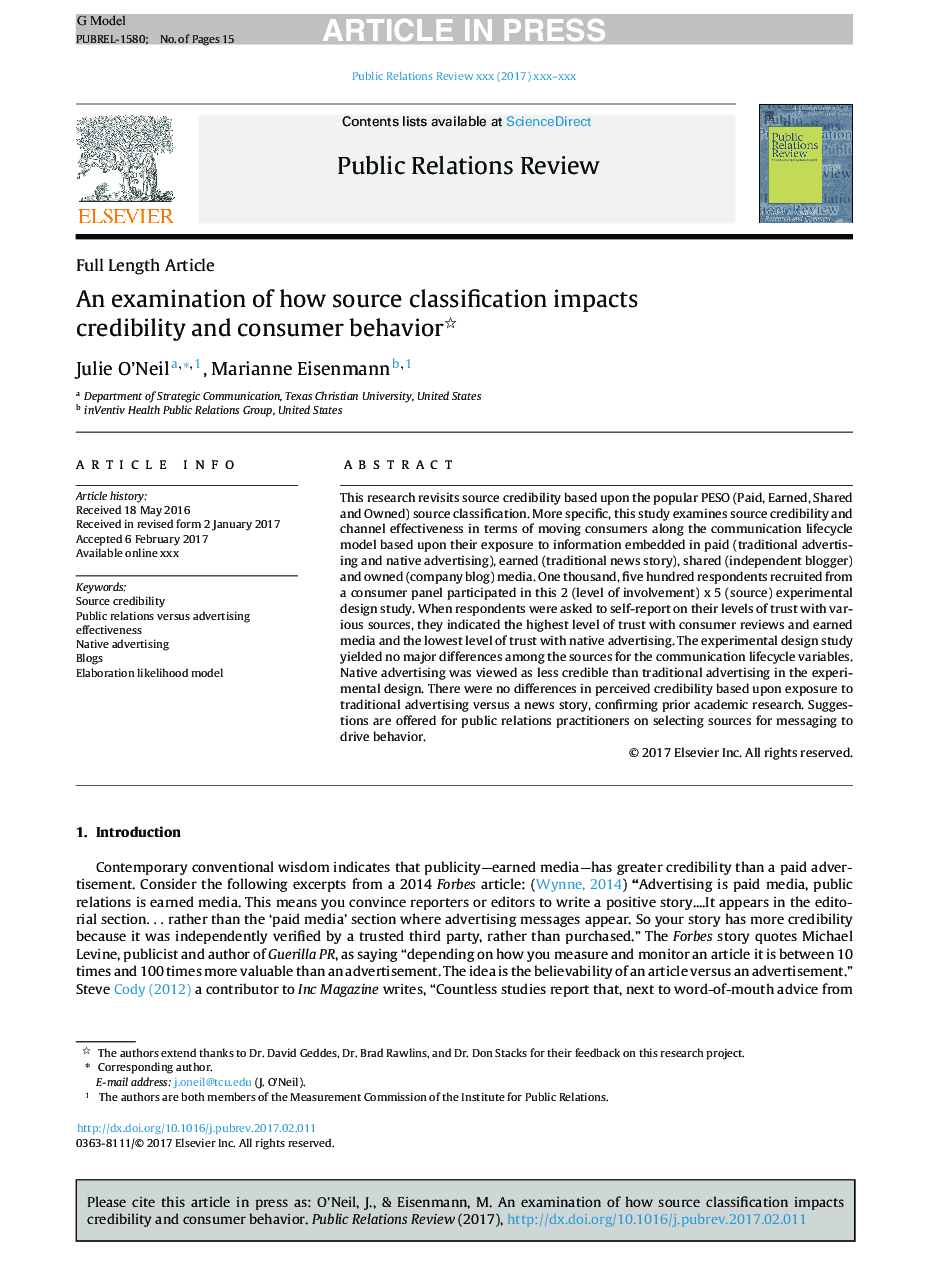| Article ID | Journal | Published Year | Pages | File Type |
|---|---|---|---|---|
| 4761806 | Public Relations Review | 2017 | 15 Pages |
Abstract
This research revisits source credibility based upon the popular PESO (Paid, Earned, Shared and Owned) source classification. More specific, this study examines source credibility and channel effectiveness in terms of moving consumers along the communication lifecycle model based upon their exposure to information embedded in paid (traditional advertising and native advertising), earned (traditional news story), shared (independent blogger) and owned (company blog) media. One thousand, five hundred respondents recruited from a consumer panel participated in this 2 (level of involvement) x 5 (source) experimental design study. When respondents were asked to self-report on their levels of trust with various sources, they indicated the highest level of trust with consumer reviews and earned media and the lowest level of trust with native advertising. The experimental design study yielded no major differences among the sources for the communication lifecycle variables. Native advertising was viewed as less credible than traditional advertising in the experimental design. There were no differences in perceived credibility based upon exposure to traditional advertising versus a news story, confirming prior academic research. Suggestions are offered for public relations practitioners on selecting sources for messaging to drive behavior.
Related Topics
Social Sciences and Humanities
Business, Management and Accounting
Marketing
Authors
Julie O'Neil, Marianne Eisenmann,
